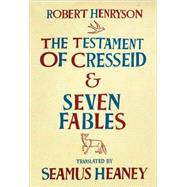
Note: Supplemental materials are not guaranteed with Rental or Used book purchases.
Purchase Benefits
What is included with this book?
Seamus Heaney was born in County Derry in Northern Ireland. Death of a Naturalist, his first collection, appeared in 1966, and since then he has published poetry, criticism, and translations that have established him as one of the leading poets of his generation. In 1995 he was awarded the Nobel Prize in Literature. District and Circle, his eleventh collection of poems, was published in 2006 and was awarded the T. S. Eliot Prize.
The New copy of this book will include any supplemental materials advertised. Please check the title of the book to determine if it should include any access cards, study guides, lab manuals, CDs, etc.
The Used, Rental and eBook copies of this book are not guaranteed to include any supplemental materials. Typically, only the book itself is included. This is true even if the title states it includes any access cards, study guides, lab manuals, CDs, etc.